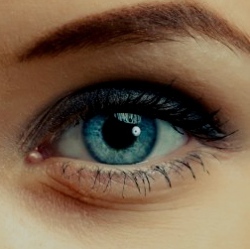
Repairing people’s sense of sight by way of retinal implants is a field of research that is seeing some rather promising advances, with a number of devices under development that promise to restore vision by stimulating optical neurons at the back of the eye. But researchers at the University of Oxford say they have broken new ground:
They are crafting the first such implant entirely from soft, natural materials, which brings with it the prospect of more successful integration in the human body.
The hope is that retinal implants can be used to restore vision in people suffering from conditions like age-related macular degeneration (AMD) and retinitis pigmentosa. The retina is a light-sensitive tissue that sits against the rear of our eye, capturing light and turning it into electrical signals that stimulate neurons and trigger a response in the brain, which turns the signals into an image.
But conditions like AMD and retinitis pigmentosa, which affect many millions around the world, effectively destroy the photodetector cells in the retina and make vision worsen over time. Retinal implants hold the promise of restoring vision with tiny prosthetic devices that capture light, convert it into electrical signals and then stimulate the neurons in the retina so the brain can form an image.
Different approaches to this problem have involved bundles of nanowires, microchips and carbon nanotubes, but in the view of the Oxford researchers, opting only for materials that more closely resemble human tissue has a serious upside.
"The human eye is incredibly sensitive, which is why foreign bodies like metal retinal implants can be so damaging, leading to inflammation and or scaring," says the leader of the research team, Vanessa Restrepo-Schild. "But a biological synthetic implant is soft and water based, so much more friendly to the eye environment."
To that end, Restrepo-Schild and her team developed a two-layered artificial retina they say works much like the real thing. Made up of hydrogels and cell-membrane proteins arranged in a 4×4 array, the two-layered synthetic retina is designed like a camera. The cells respond to light like pixels do, producing distinct electrical signals as grey-scale images and patterns of light are moved across the device. The team believes that these electrical signals, with further work, could be hooked up to living tissue and stimulate the neurons at the back of the eye.
Such a feat is a way off – the device has only been tested in the lab so far – but the team’s next step will explore this very possibility, first by enabling the artificial retina to respond to different colors, and then possibly shapes and symbols. Restrepo-Schild has filed a patent for the technology and, further down the track, hopes to test it on animals and then eventually conduct clinical trials in humans.
